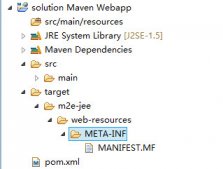背景
那么profile的组合如何使用呢???
比如我们这样使用
|
1
|
@profile({"prod", "unit-test"}) |
分析
上述的profile大家应该不会存有疑问 当profile为prod或者unit-test的时候才会生效。
但是如果我们使用非呢~如何确保在某些情况下不生效!
spring提供了常见的!来进行描述
因此如果想要在非生产环境生效只要简单的写成
|
1
|
@profile({"!prod"}) |
那么如何在多个环境下不生效呢???
自作聪明的某些人【我】如下代码
|
1
|
@profile({"!prod", "!unit-test"}) |
那么实际情况是否如此呢???
我们看一下对应的代码
代码
profile是通过profilecondition来完成控制的
|
1
2
3
4
5
6
7
8
9
10
11
12
13
14
15
16
17
18
19
|
class profilecondition implements condition { @override public boolean matches(conditioncontext context, annotatedtypemetadata metadata) { if (context.getenvironment() != null) { multivaluemap<string, object> attrs = metadata.getallannotationattributes(profile.class.getname()); if (attrs != null) { for (object value : attrs.get("value")) { if (context.getenvironment().acceptsprofiles(((string[]) value))) { return true; } } return false; } } return true; } } |
很明显可以看到了acceptsprofiles
|
1
2
3
4
5
6
7
8
9
10
11
12
13
|
/** * return whether one or more of the given profiles is active or, in the case of no * explicit active profiles, whether one or more of the given profiles is included in * the set of default profiles. if a profile begins with '!' the logic is inverted, * i.e. the method will return true if the given profile is <em>not</em> active. * for example, <pre class="code">env.acceptsprofiles("p1", "!p2")</pre> will * return {@code true} if profile 'p1' is active or 'p2' is not active. * @throws illegalargumentexception if called with zero arguments * or if any profile is {@code null}, empty or whitespace-only * @see #getactiveprofiles * @see #getdefaultprofiles */boolean acceptsprofiles(string... profiles); |
从上述可以看到应该是or的条件
当然代码如下
|
1
2
3
4
5
6
7
8
9
10
11
12
13
14
15
|
@overridepublic boolean acceptsprofiles(string... profiles) { assert.notempty(profiles, "must specify at least one profile"); for (string profile : profiles) { if (stringutils.haslength(profile) && profile.charat(0) == '!') { if (!isprofileactive(profile.substring(1))) { return true; } } else if (isprofileactive(profile)) { return true; } } return false;} |
因此可以看到当是!条件的时候会判断如果当前未激活profile返回true 否则当前是正常条件的换当前profile如果激活则返回true 当上述条件都不满足才返回false
因此上述逻辑告诉我们其实应该是或者的逻辑。因此
|
1
|
@profile({"!prod", "!unit-test"}) |
!prod||!unit-test===>!(prod&&unit-test) 也就是说当prod和unit-test都生效的时候才不会注册 其他调均都会注册生效
以上就是本文的全部内容,希望对大家的学习有所帮助,也希望大家多多支持服务器之家。
原文链接:https://my.oschina.net/qixiaobo025/blog/1927580














